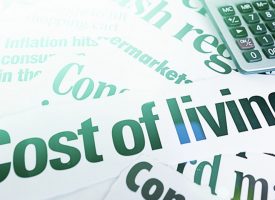As we move past the midway point of June, look at these important events you probably missed this week.
Succinct Summation Of The Week’s Events
June 17 (King World News) – Here is what Peter Boockvar noted as the world awaits the next round of monetary madness:
Positives
1) The Fed stuck to their guns with a rate increase and implicitly expressing the desire to hike rates again this year as they further distance themselves from zero. Even with another hike the fed funds rate will still only be 1.375% (how spoiled everyone got over the past 8 years). Reducing the size of their balance sheet begins the process of extricating them from our markets…
IMPORTANT:
KWN receives so many emails from its global readers and listeners about which high-quality mining companies they should invest in, and as a result we have added another remarkable company to the list. This is one of the greatest gold opportunities in U.S. history and you can take a look at this remarkable company and listen to the just-released fantastic interview with the man who runs it by CLICKING HERE OR BELOW
2) The BoE now has 3 members that believe in price stability and voted to at least take back the emergency rate cut after Brexit. Two Bank of Canada members, including the Governor made clear they want to hike rates and get off the .50% level. Kuroda and the BoJ are not ready to announce an exit strategy but they acknowledge what’s been seen for a while, they are buying less JGB’s. The pace is closer to 60T yen instead of the official target of 80T yen.
3) Initial jobless claims totaled 237k, 4k less than expected and down from 245k last week. As a 233k print fell out of the 4 week average, it rose by 1k to 243k. Continuing claims, delayed by a week, was up by 6k.
4) After falling into contraction in May, the NY manufacturing index in June bounced sharply to 19.8, well above the estimate of 5. As for the 6 month outlook, the business activity index was up by 2.4 pts to 41.7. It got as high as 49.7 in December. Capital spending plans were mixed. Capital expenditures rose by 7.4 pts after falling by 14.3 pts last month but the tech spending component was lower by 2 pts.
5) The Philly regional manufacturing index in June fell to 27.6 from 38.8 but it still was slightly ahead of the estimate of 24.9 and is still at a good level. For perspective, the 6 month average is 31.4. The fly in this data was the 3.5 pt drop in the 6 month outlook which is now at the lowest level since June 2016. Part of this weakness was a 15 pt drop in the outlook for new orders and an 8 pt fall in backlogs. Cap ex plans fell by 4 pts to a 4 month low.
6) Both headline and core CPI missed expectations by one tenth with -.1% and .1% m/o/m changes. The y/o/y gain for the headline print was 1.9% and 1.7% at the core. Keeping a lid on the core was the 2.6% y/o/y increase in services inflation ex energy which is a continued slowdown from the persistent 3%+ gains we saw for a few years running. I don’t root for 2% consumer price inflation per annum.
7) Import prices in May fell .3% m/o/m all because of a drop in petro prices and more than the estimate of down .1%. Ex this and also food, prices were flat m/o/m. On a y/o/y basis, prices are higher by 2.1% but just .6% ex food and energy.
8) With the lowest 30 mortgage rate since November, refi’s rose by 9.2% w/o/w while still remaining down by 27% y/o/y.
9) The NFIB small business optimism index in May held steady at 104.5. It printed 94.9 in October, 98.4 in November and peaked at 105.9 in January. The NFIB CEO said “The remarkable surge in optimism that began last year right after the election shows no signs of slowing down. Small business owners are highly encouraged by the President’s regulatory reform agenda, and they remain optimistic there will be tax reform and health care reform. This is a policy driven phenomenon.” Also, NFIB Chief Economist Dunkelberg said “the tight labor market has been a persistent problem for small business owners for the past several months, and the problem appears to be getting worse. It’s forcing small business owners to increase compensation, which we’re seeing in this data, to attract new workers and keep the ones they have.”
10) Out late last Friday, C&I loan growth slowed to just 1.7% y/o/y vs 2.6% a month ago and well below the 6.3% pace at the end of January.
11) Total loans extended in China in May added up to 1.06T yuan, 130b below expectations and which is down from 1.394T in April and the slowest since October. However, the year to date pace of increase is still a robust 15%. The non bank side saw an outright decline in May of lending, albeit modest, as bank lending was steady m/o/m. Noteworthy was the 9.6% y/o/y increase in the money supply which was well below the estimate of 10.4% and down from 10.5% growth in April. The PBOC referred to this slowdown in money supply as the “new normal” and follows a “prudent, neutral monetary policy, and intensified supervision that has compelled the financial system to reduce leverage.”
12) In China, retail sales grew by 10.7% y/o/y in May as expected and was the same pace of gain seen in April. IP was higher by 6.5% y/o/y, also the same rate as in April but one tenth more than expected.
13) Australia reported a much better than expected May jobs number. They said 42k jobs were added, well more than the estimate of up 10k and the unemployment rate fell two tenths to 5.5%, the lowest since early 2013. Adjusting this job gain for population, it would be like the US adding 560k jobs in a month.
14) In the first round, Emmanuel Macron and his party dominated France’s Parliamentary vote giving him the biggest potential majority of any party in the Assembly since 1993.
15) Last Sunday in Italy, in almost every local election yesterday the Five Star Movement did not make it to the run off vote to follow. They finished in 3rd or 4th place in just about every city that voted.
16) April industrial production in the Eurozone rose .5% m/o/m as expected and March was revised higher by 3 tenths.
Negatives
1) At the same time the US economy is showing its age, the Fed is getting more aggressive with their rate hike cycle and wants to begin quantitative tightening. For asset prices, particularly stocks, that LOVED zero rates and QE, when will these steps lead to the inevitable stumble? Just because it hasn’t yet doesn’t mean it won’t.
2) And the punch bowl might get less spiked this year in the UK, Canada and Japan based on what we heard this week. The ECB will announce another taper in September. Is a soft landing possible?
3) Core US retail sales were flat m/o/m in May which was 3 tenths below expectations but April was revised up by 4 tenths so we can call it a push relative to the estimates. Sales ex auto’s and gasoline were also unchanged m/o/m vs the estimate too of up 3 tenths but April was revised up by two tenths. Core retail sales were up by 2.9% y/o/y which is back below the 5 year average of 3.3% and well below the 5%+ pace of gains seen in the prior two expansions.
4) The NAHB home builder confidence survey in June was 67, down from 69 in May (revised from 70) and 3 pts below the estimate. All three components fell m/o/m by 2 pts with Prospective Buyers Traffic in particular back below 50 at 49 after 3 months above it. The NAHB said “builder confidence levels have remained consistently sound this year, reflecting the ongoing gradual recovery of the housing market.” Preventing a greater supply of homes where the market most needs it though (below $250k), the NAHB said “builders continue to express their frustration over an ongoing shortage of skilled labor and buildable lots that is impeding stronger growth in the single family sector.”
5) After a 10% spike last week, the MBA said mortgage applications to buy a home fell 2.8% w/o/w but are still up a good 8% y/o/y.
6) Both housing starts and permits disappointed in May. Starts totaled 1.092mm annualized, well below the estimate of 1.22mm and April was revised down by 16k to 1.156mm. This is the slowest pace since September. Both components contributed to the miss. Single family starts fell by 32k m/o/m to 794k, the lowest since September. Multi family starts totaled 298k, down 32k m/o/m and that is the slowest pace of starts also since September. The miss on the permit side was 81k while April was basically left unrevised. Single family permits fell by 15k and multi family permits were lower by 45k.
7) US Industrial production in May was unchanged m/o/m, two tenths less than expected. Most noteworthy was the .4% drop in manufacturing, well worse than the estimate of up .1% because of a 2% drop in the production of vehicles/parts. As auto production is still up 4.5% y/o/y points to the likelihood of more weakness ahead. GM said as much Wednesday when “they will extend the typical summer shutdown at certain US factories to deal with slumping sales and bloated inventory” according to the WSJ. Overall capacity utilization at 76.6% is still well below the long term average of about 80% as we sit here in the 9th yr of this expansion. Capacity utilization in the auto sector in particular fell to 81.6% from 83.4%.
8) US PPI in May was flat m/o/m as expected after rising by .5% in April. The core rate jumped .3% after a .4% rise in April and that was 2 tenths more than expected. Looking y/o/y puts headline PPI up by 2.4% and the core rate higher by 2.1%. That core rate matches a 5 yr high. Prices in the pipeline (intermediate stage of production) were benign with prices for processed goods up by .1% m/o/m while unprocessed goods prices down by 3% while services prices were unchanged.
9) After buying in March for just the 2nd time in 14 months, foreigners again were back to selling US Treasury notes and bonds in April. A net $22.5b was sold bringing the year to date total to $18.8b of selling which follows $326b sold in 2016 and $20.3b in 2015. China again was a seller of notes and bonds totaling $3.4b but more than offset that by buying T-bills which actually increased their total holdings. And, selling out of Kong Kong continued as well. Japan too, the largest holder of US Treasuries, continued their selling with a net amount of $8.4b of notes and bonds and also sold T-bills. Total Asian selling totaled $12.6b for notes and bonds and Europe was a large seller amounting to $17.9b.
10) The preliminary June UoM consumer confidence index fell 3 pts to 84.7 and below the estimate of 87.6. It’s the lowest since October when it touched 76.8 before the election before bouncing to 85.2 in November. Both Current Conditions and Expectations fell m/o/m. With respect to Income expectations, those expecting a higher one fell 1 pt after rising by 2 pts last month but less people are expecting lower income. The employment component also fell and to the lowest level since November. A particular area of weakness was in the Business Expectations component, both present and with the outlook. Spending intentions were mixed. Those planning on buying a car rose 5 pts but only after dropping by 17 pts last month. Those that said it’s a good time to buy a home rose 3 pts but after falling by 10 pts in May. After a multi year high in those that said it’s a good time to sell a home was down by 7 pts after rising by the same amount in May. Those that said it’s a good time to buy a major household item fell 6 pts to the weakest since October. Lastly, one year inflation expectations held at 2.6%, exactly in line with the 2 yr average and slightly below the 5 yr. UoM said, “The recent erosion of confidence was due to more negative perceptions of the proposed economic policies among Democrats (surveyed) and the reduced likelihood of passage of these policies among Republicans.”
11) For the 3 months ended April, UK wages ex bonus’ were up just 1.7% y/o/y instead of the estimate of up 2% after only a 1.8% gain in the month prior (revisions were made going back years).
12) As for UK job hiring’s, for the 3 months ended April, 109k were added, below the estimate of up 125k while the unemployment rate held at 4.6%, the lowest since 1975. As for what was seen in May, jobless claims were up by 7.3k which brings the 3 month increase to almost 63k, the most since 2011.
13) UK headline CPI in May was higher by 2.9% y/o/y, two tenths more than expected, up from 2.7% in April and matches the quickest pace of inflation since April 2012. The core rate was also faster than forecasted as it was up 2.6% y/o/y vs the 2.4% estimate and up from 2.4% in April. The retail price index, another measure of inflation, jumped 3.7% y/o/y, a level last seen in February 2012. The only respite in the inflation data was a slowdown in the pace of gains for wholesale input inflation which fell 1.3% m/o/m and moderated to 11.6% y/o/y increase which were both below estimates.
14) The REAL wage squeeze impacting the UK citizenry was reflected in May retail sales ex fuel oil which fell 1.6% m/o/m, more than the estimate of down 1%. The y/o/y gain slowed to a gain of just .6% vs the forecast of up 1.9% and is the slowest pace of gain in 4 years. A UK ONS statistician said “Increased retail prices across all sectors seem to be a significant factor in slowing growth.”
15) Investor confidence in the German economy cooled a bit in June. The ZEW index fell 2 pts to 18.6 and that was 3 pts below expectations. For perspective, this index was as high as 62 in December 2013. The current conditions component was much better as it rose 4 pts to 88, the best since July 2011. The ZEW said “The prospects for the German economy remain favorable. This is not least due to the positive GDP growth in the European Union in the first quarter of 2017.”
16) Eurozone exports in April fell by 2.1% m/o/m while imports were lower by .7% m/o/m.
17) A week after Mario Draghi in his press conference talked about the Eurozone generating “low quality jobs” as reason for modest wage growth, wages rose 1.4% y/o/y in Q1 vs 1.5% in Q4 in the Eurozone. CPI averaged 1.8% in Q1. Thus the average European saw a drop in REAL wages along with the Brits. Headline CPI did moderate to 1.4% in May in today’s final revision but this again points to the nonsense of a central bank wanting 2% inflation irrespective of where wage growth is.
18) Chinese fixed asset investment slowed to a 8.6% y/o/y ytd jump from 8.9% in the month prior and two tenths less than forecasted as residential construction moderates in response to government dictate.
19) Machine orders in Japan in April fell 3.1% m/o/m instead of rising by .5% as expected. The inconsistency in their data is amazing.
***ALSO JUST RELEASED: 54-Year Market Veteran – Gold & Silver Are Now The Cheapest Assets On The Planet CLICK HERE.
© 2017 by King World News®. All Rights Reserved. This material may not be published, broadcast, rewritten, or redistributed. However, linking directly to the articles is permitted and encouraged.









